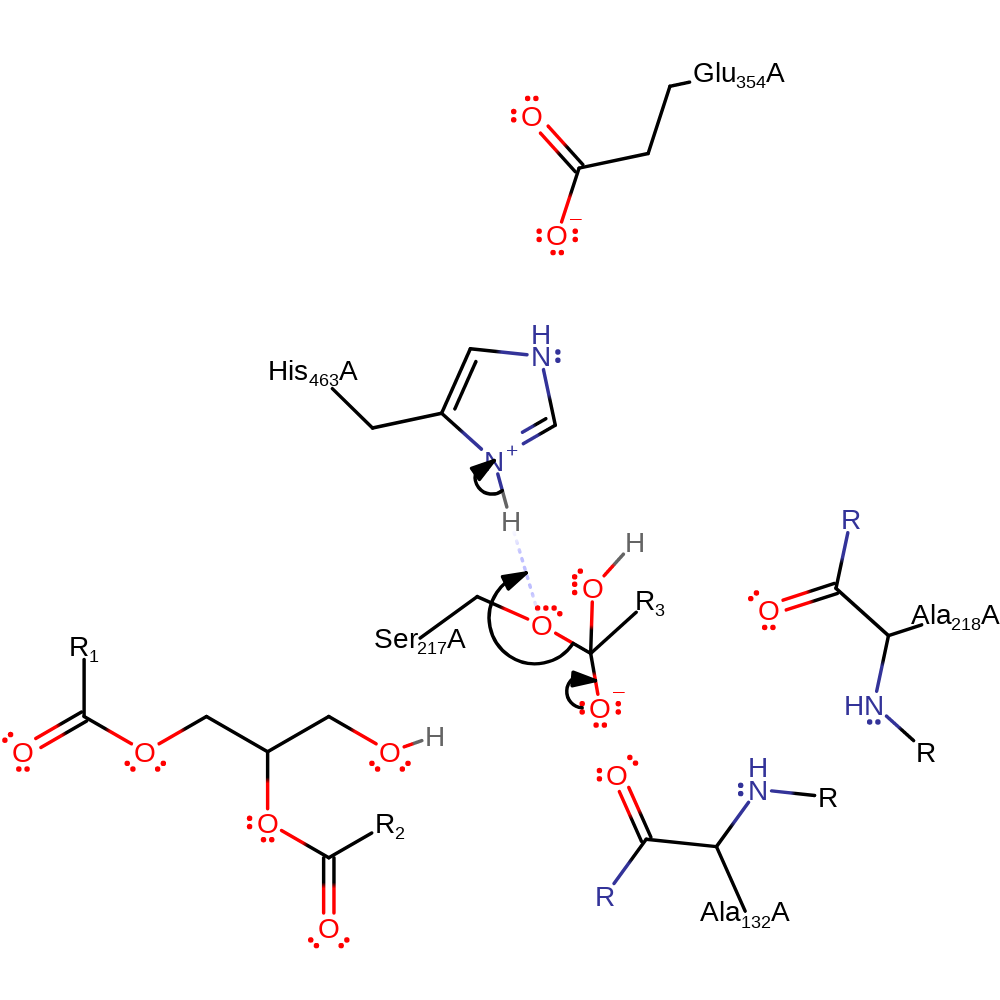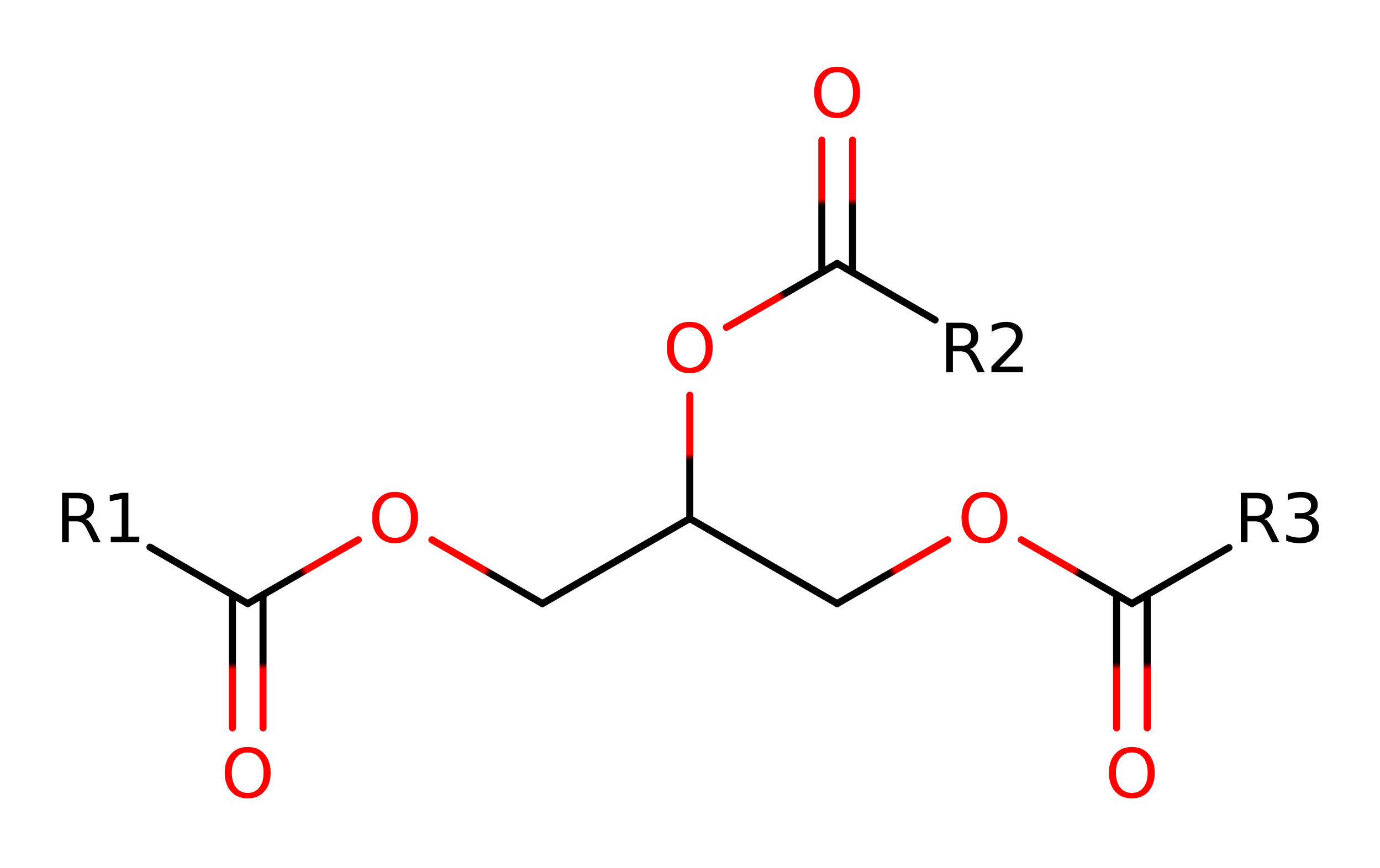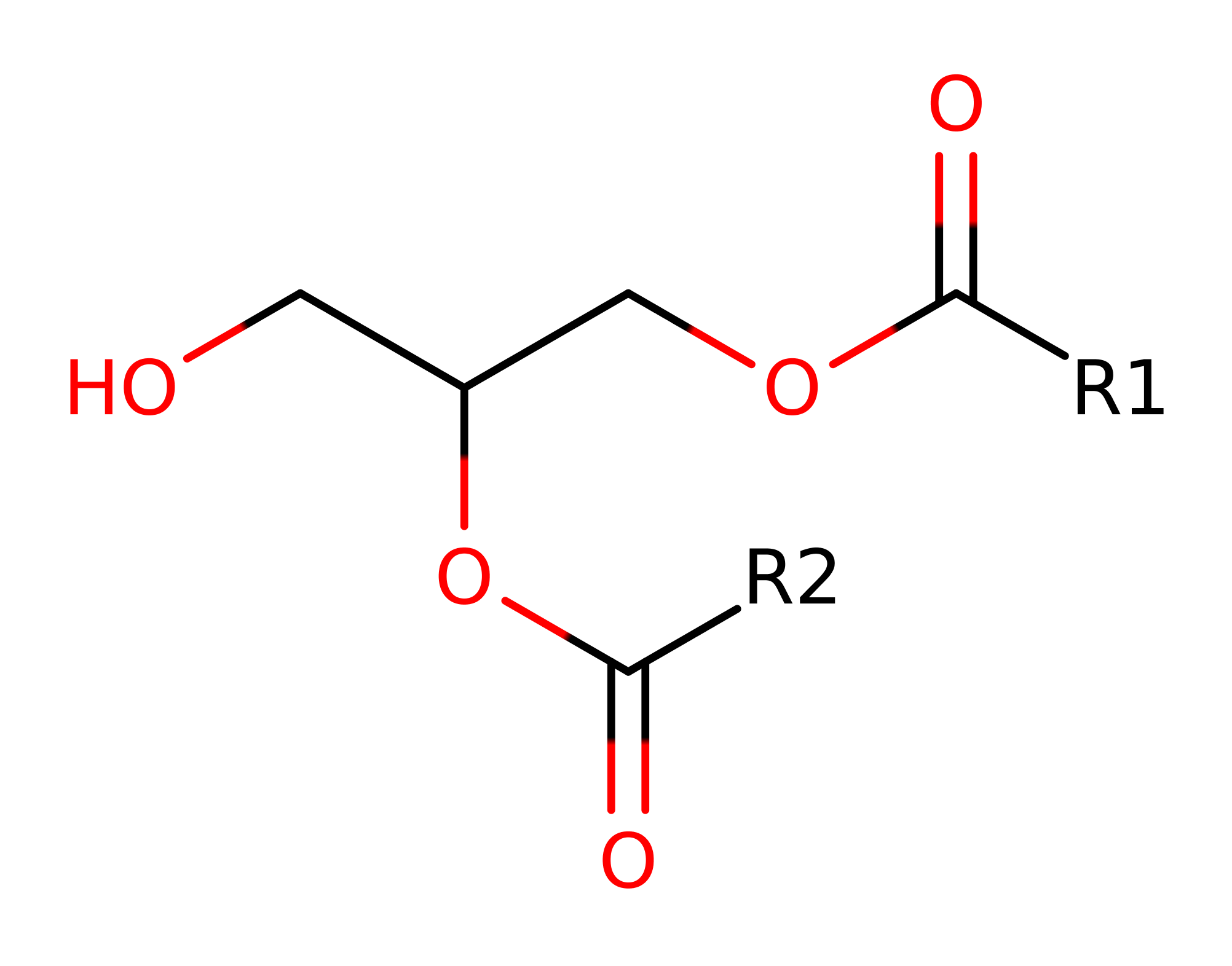Triacylglycerol lipase (type B carboxylestrase)
Catalyses the hydrolysis of all ester bonds in triglyceride and displays a high affinity for triolein. Member of the alpha-beta hydrolase superfamily.
Reference Protein and Structure
- Sequence
-
P22394
 (3.1.1.3)
(3.1.1.3)
 (Sequence Homologues)
(PDB Homologues)
(Sequence Homologues)
(PDB Homologues)
- Biological species
-
Geotrichum candidum (Fungus)

- PDB
-
1thg
- 1.8 ANGSTROMS REFINED STRUCTURE OF THE LIPASE FROM GEOTRICHUM CANDIDUM
(1.8 Å)



- Catalytic CATH Domains
-
3.40.50.1820
 (see all for 1thg)
(see all for 1thg)
Enzyme Reaction (EC:3.1.1.3)
Enzyme Mechanism
Introduction
This protein is a member of the alpha-beta hydrolase superfamily and is known to function via a Ser-His-Glu triad mechanism. Here the histidine of the triad activates the serine, which acts as a nucleophile, forming a covalent intermediate, which then collapses to eliminate the first product. Hydrolysis of the enzyme-substrate bond results in the release of the final product and regeneration of the active site.
Catalytic Residues Roles
| UniProt | PDB* (1thg) | ||
| Ala151 (main-N), Ala237 (main-N) | Ala132A (main-N), Ala218A (main-N) | Forms the oxyanion hole that stabilises the negatively charged intermediates and transition states formed during the course of the reaction. | electrostatic stabiliser |
| Ser236 | Ser217A | Part of the Ser-His-Glu catalytic triad. Acts as a nucleophile. | covalently attached, nucleofuge, nucleophile, proton acceptor, proton donor |
| Glu373 | Glu354A | Part of the Ser-His-Glu catalytic triad. Perturbates the pKa of the triad histidine. | increase basicity, modifies pKa, electrostatic stabiliser |
| His482 | His463A | Part of the Ser-His-Glu catalytic triad. Acts as a general acid/base to activate the catalytic serine and water substrates. | proton acceptor, proton donor |
Chemical Components
bimolecular nucleophilic addition, intermediate formation, overall reactant used, proton transfer, overall product formed, unimolecular elimination by the conjugate base, native state of enzyme regenerated, intermediate terminatedReferences
- Schrag JD et al. (1993), J Mol Biol, 230, 575-591. 1·8 Å Refined Structure of the Lipase from Geotrichum candidum. DOI:10.1006/jmbi.1993.1171. PMID:8464065.

Step 1. His463 acts as a general base activating the Ser217 hydroxyl group for nucleophilic attack on the carbonyl carbon of the ester bond. The third component of this catalytic triad- Glu354 acts to increase the basicity of the histidine. The oxyanion intermediate formed is stabilized by the amide groups of Ala132 and Ala218.
Download: Image, Marvin FileCatalytic Residues Roles
| Residue | Roles |
|---|---|
| Ala132A (main-N) | electrostatic stabiliser |
| Ala218A (main-N) | electrostatic stabiliser |
| Glu354A | electrostatic stabiliser, modifies pKa, increase basicity |
| Ser217A | covalently attached |
| His463A | proton acceptor |
| Ser217A | proton donor, nucleophile |
Chemical Components
ingold: bimolecular nucleophilic addition, intermediate formation, overall reactant used, proton transfer
Step 2. The tetrahedral intermediate collapses and diacylglycerol is eliminated.
Download: Image, Marvin FileCatalytic Residues Roles
| Residue | Roles |
|---|---|
| Ser217A | covalently attached |
| Ala132A (main-N) | electrostatic stabiliser |
| Ala218A (main-N) | electrostatic stabiliser |
| Glu354A | electrostatic stabiliser |
| His463A | proton donor |
Chemical Components
overall product formed, proton transfer, ingold: unimolecular elimination by the conjugate base
Step 3. His463 activates water for nucleophilic attack and another oxyanion intermediate is formed.
Download: Image, Marvin FileCatalytic Residues Roles
| Residue | Roles |
|---|---|
| Ser217A | covalently attached |
| Ala132A (main-N) | electrostatic stabiliser |
| Ala218A (main-N) | electrostatic stabiliser |
| Glu354A | electrostatic stabiliser, modifies pKa, increase basicity |
| His463A | proton acceptor |
Chemical Components
proton transfer, ingold: bimolecular nucleophilic addition
Step 4. The tetrahedral intermediate collapses and Ser217 is eliminated.
Download: Image, Marvin FileCatalytic Residues Roles
| Residue | Roles |
|---|---|
| Ala132A (main-N) | electrostatic stabiliser |
| Ala218A (main-N) | electrostatic stabiliser |
| Glu354A | electrostatic stabiliser |
| Ser217A | proton acceptor, nucleofuge |
| His463A | proton donor |





 Download:
Download: